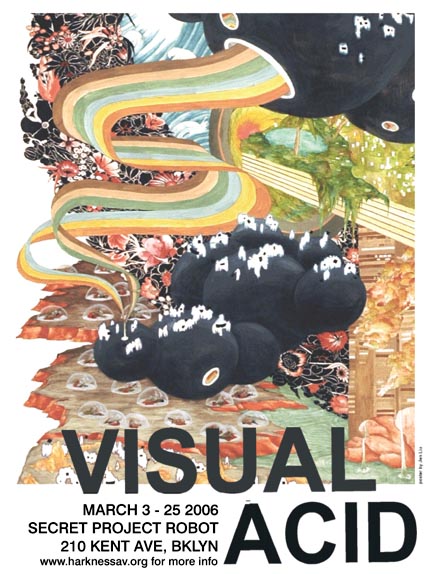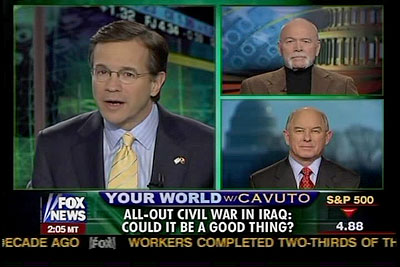View current page
...more recent posts
A while back I was talking about the art and theory connections in former Art & Language artist Kathryn Bigelow's "failed summer blockbuster" K-19: The Widowmaker. The heart of the film, which some '02 reviewers found "extremely claustrophobic and unpleasant," is a scene where Russian submariners wearing only chemical suits (because the military forgot to provide them radiation suits--"They might as well be wearing raincoats," says one character) enter the reactor room in 10 minute shifts to perform a complicated welding operation. Each set of crews emerges half-dead, vomiting, their skin looking like raw hamburger. Worse, the next set of crews sees them and knows that's what they're going to look like in ten minutes.
The style is as bleak as the industrial safety film genre, bleaker, because even those films have a kind of unintentional slapstick with limbs severed by forklifts, spurting blood a la Monty Python, etc. K-19's reactor scene is pure unrelieved horror. Hard not to think of the 9/11 rescue crews going into the cauldron of burning toxic materials to pull out fragments of bodies. And as with the K-19 crew, poorly supplied and poorly informed by an inept government, the 9/11 crews are now dying from those toxic hazards. When I saw K-19 in 2002 I couldn't believe how brutally honest Bigelow was being in a summer blockbuster. She was taking us all into the dirty secret world of modernity, the "down side" of technology that we live with every day and simply can't bear to think about. Here's a Wikipedia entry on Paul Virilio's theories of the "integral accident" (previously posted with a GIF of a mutated monster truck):
Technology cannot exist without the potential for accidents. For example, the invention of the locomotive also entailed the invention of the rail disaster. Virilio sees the Accident as a rather negative growth of social positivism and scientific progress. The growth of technology, namely television, separates us directly from the events of real space and real time. We lose wisdom, lose sight of our immediate horizon and resort to the indirect horizon of our dissimulated environment. From this angle, the Accident can be mentally pictured as a sort of "fractal meteorite" whose impact is prepared in the propitious darkness, a landscape of events concealing future collisions. Even Aristotle claimed that "there is no science of the accident," but Virilio disagrees, pointing to the growing credibility of simulators designed to escape the accident--an industry born from the unholy marriage of post-WW2 science and the military-industrial complex. A good example of Virilio's integral accident is Hurricane Katrina and the disastrous events that followed, which brought the eyes of the world upon a single nexus of time and place.The bloody mess in Iraq is also a denied side of the West's modernity. The US caused it, the US pretends it isn't happening while continuing along the crazed path of ultimate consumption and non-stop electronic amusements. Not trying to be a Cassandra here, and I'm not opposed to electronic amusements, just wondering if it's possible to have them without living with endless untenable contradiction.

VISUAL ACID
March 3 - March 25 2006
Secret Project Robot, Brooklyn New York
Secret Project Robot and Harkness Audiovisual present VISUAL ACID, a collaborative installation by Nick Hallett, Leif Krinkle, Zach Layton, and Brock Monroe, which takes as its starting point the electronic disco genre, Acid House, to construct an immersive environment of rhythmic light.
Defined by the sounds of the "808" drum machine and "303" bassline sequencer (both developed by Japanese electronic music manufacturer Roland) Acid House music was created by Chicago-based DJs during the mid-1980s.
VISUAL ACID will too be defined on the basis of these revolutionary music computers. The centerpiece of the installation is a genuine 808, its basic functions harnessed to trigger a series of stroboscopic, fluorescent light fixtures through the unit's individual audio outputs (a remarkable and unique feature of the 808), thereby reimagining the instrument as a fully interactive visuals-generating tool. As its companion, an "Optical 303" squelches the imaged representations of signature Acid basslines, which are projected through rotating prisms and shot throughout the space as cinematic, rainbow-infused light.
An opening reception will be held at Secret Project Robot on Friday, March 3 from 7 to 9 pm.
To coincide with the exhibition of VISUAL ACID, a variety of related events held will be hosted at Secret Project Robot, culminating in a "Bubblifique" extravaganza on March 25. As the space does not hold regular hours, these events will be the only times VISUAL ACID is open to the public. Please visit www.harknessav.org for more information.
Secret Project Robot is located at Monster Island, 210 Kent Avenue at the corner of Metropolitan Avenue in Williamsburg, Brooklyn. Entrance to the gallery space is on River Street. For more details, contact Nick Hallett, nick(at)harknessav(dot)org.
UPCOMING HARKNESS EVENTS
March 9 at 10:30 PM
HOW THE WEST MAY SAVE US YET: music vidz from the underground resistance
New York Underground Film Festival screening curated by Nick Hallett.
All-Out Civil War in Iraq: Could It Be a Good Thing? (Asks Fox News)

From the Cheney Administration's (corporate) Goebbels. Just posting this for posterity. David Asman, the twit with the yellow tie, is the classic dweeb who couldn't get a girlfriend in high school and had to join the chess club and still burns with resentment. Bush, a spoiled but powerful bully, is the perfect person for him to support.
